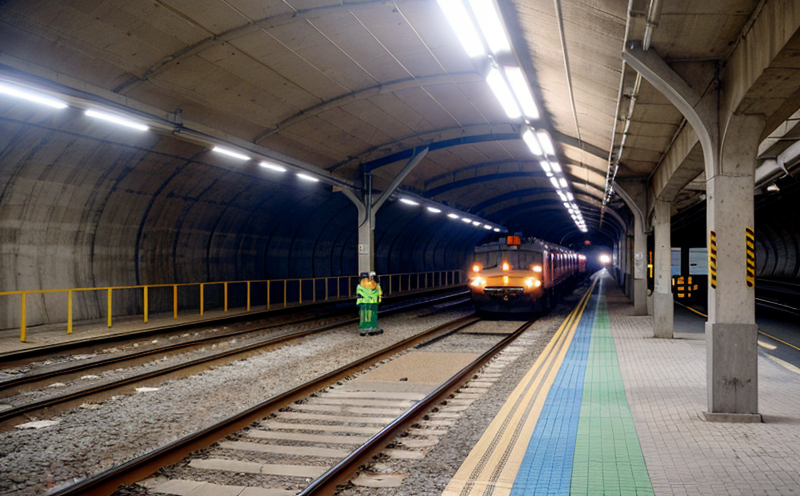EN 14509 Insulation Panel Fire Testing for Station Structures
The European Standard EN 14509 is a crucial document that specifies the testing methods for insulation panels used in railway and transportation station structures. This standard ensures that materials meet stringent fire safety requirements, protecting passengers, staff, and infrastructure from potential risks in case of fire incidents.
Compliance with EN 14509 is essential for manufacturers, installers, and operators within the railway and transportation sectors. It helps to guarantee that insulation panels used in station structures can withstand high-temperature exposure without compromising structural integrity or releasing toxic substances into the environment. This standard plays a vital role in safeguarding public safety by ensuring the materials are robust enough to prevent fires from spreading rapidly.
The testing process outlined in EN 14509 involves subjecting insulation panels to controlled fire exposures under specific conditions. The goal is to evaluate their resistance to ignition, flame spread, and smoke production. By adhering strictly to these protocols, laboratories can provide reliable data on the performance of various materials used in station structures.
One key aspect of EN 14509 testing lies in understanding how different factors influence the behavior of insulation panels during a fire event. These include but are not limited to the type of material (e.g., mineral wool, expanded glass), thickness, density, and manufacturing processes involved. Understanding these variables allows for more precise evaluation and comparison between various products.
Another important consideration when conducting EN 14509 tests is ensuring proper specimen preparation before placing them into the furnace for testing. Specimens must be cut to standardized dimensions according to the standard, which ensures consistency across all samples being tested. Additionally, it’s critical that these specimens are accurately weighed and documented prior to insertion into the furnace to ensure accurate results.
During the actual test procedure, insulation panels undergo rigorous heating cycles where they experience temperatures exceeding 1000°C (1832°F). Throughout this process, data on heat release rate, smoke production levels, and flame spread characteristics are continuously monitored using advanced instrumentation. This information is then analyzed to determine whether the panel meets the specified performance criteria laid out in EN 14509.
The results of these tests provide valuable insights into the fire resistance capabilities of insulation panels used within station structures. Compliance with this standard ensures that materials are suitable for use in environments where there is a risk of fire, thereby enhancing overall safety standards for passengers and staff alike.
Industry Applications
| Application Area | Description |
|---|---|
| Railway Stations | Incorporating EN 14509-compliant insulation panels into platforms, concourses, and other public areas helps prevent fires from spreading rapidly. |
| Underground Passageways | The use of these materials ensures safer conditions in case of emergencies within tunnels or subterranean facilities. |
| Elevators and Escalators | Ensuring proper installation reduces the risk of fire-related accidents involving critical infrastructure components. |
| Overpasses and Viaducts | Promoting structural integrity during extreme conditions, including fires, enhances long-term safety benefits. |
International Acceptance and Recognition
- The European Committee for Standardization (CEN) adopted EN 14509 in 2006, establishing it as an internationally recognized standard.
- It has since been widely accepted by countries across Europe and beyond, including the United Kingdom, France, Germany, Italy, Spain, Poland, and more recently, China.
- The standard is also referenced in other regional standards such as ISO 16776-2:2015 for similar applications outside of Europe.
Environmental and Sustainability Contributions
Incorporating EN 14509-compliant insulation panels into station structures not only enhances fire safety but also contributes positively to environmental sustainability efforts. By reducing the likelihood of fires spreading quickly, these materials help minimize damage caused by such incidents.
Furthermore, using environmentally friendly materials like mineral wool or expanded glass reduces the carbon footprint associated with production and disposal processes. Properly designed insulation systems contribute to energy efficiency improvements within station buildings, leading to lower operational costs over time.
The use of EN 14509-compliant products also supports recycling initiatives by ensuring that materials can be reused or recycled at end-of-life stages without compromising safety standards. This approach fosters a circular economy mindset, aligning with global goals towards sustainability and responsible resource management.





